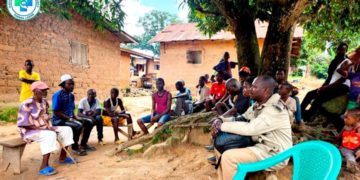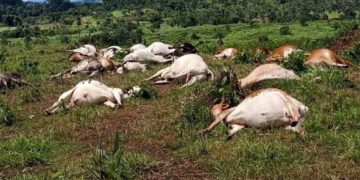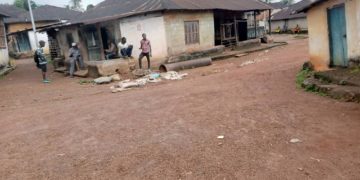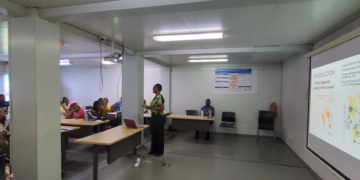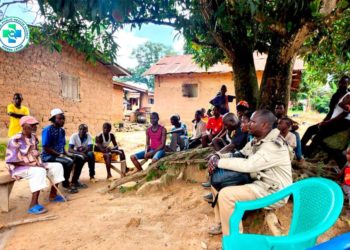The preliminary report of the final results of Sierra Leone’s first fully digital census reveals a slight increase in the provisional data.
The report presented to President Julius Maada on Thursday, August 15, shows that only 7, 0 61 individuals were added to the provisional total presented back in May, bringing the final total to 7, 548, 702, up by 456,589 since the last census in 2015.
Statistician General and Chief Census Officer, Prof. Osman Sankoh, says the latest data confirms the “robust” nature of the processes involved in the census.
Prof. Sankoh, who is also the CEO of Statistics Sierra Leone, was speaking at a ceremony to present the report to the President.
“This confirms the robust processes we put in place and consequently the high quality data we have generated,” he says at the event held at State House in Freetown.
The 2021 Mid-Term Population and Housing Census (MTPHC), conducted in December, was the first ever national population census exclusively done with the aid of digital tools. The process entailed a locality verification exercise, a digital cartographic mapping, a digital pilot census, and a digital main enumeration exercise.
The latest data confirms aspects of the provisional results, like the dominance of the female population over its male counterpart, comprising 3,727,747 (49.4 per cent) males and 3,820,955 (50.6 per cent) females. The general sex ratio is 97.6 males for every 100 females, it shows.
The data also shows the population of the country below the district level, as well as at household level. It further shows spatial distribution of the population, population density and sex distribution by district. Also featured is the number of structures in the country.
Overall, the population size of Sierra Leone in 2021 has more than tripled since the first modern census that was conducted in 1963, the data shows. It reveals that the country’s population grew almost three and half times it was in 1963, when it was 2,180,355.
The 2021 MTPHC is also the first ever Mid-Term census to be conducted in Sierra Leone. The statistical agency says it’s necessitated by the need to rectify errors committed during the 2015 census.
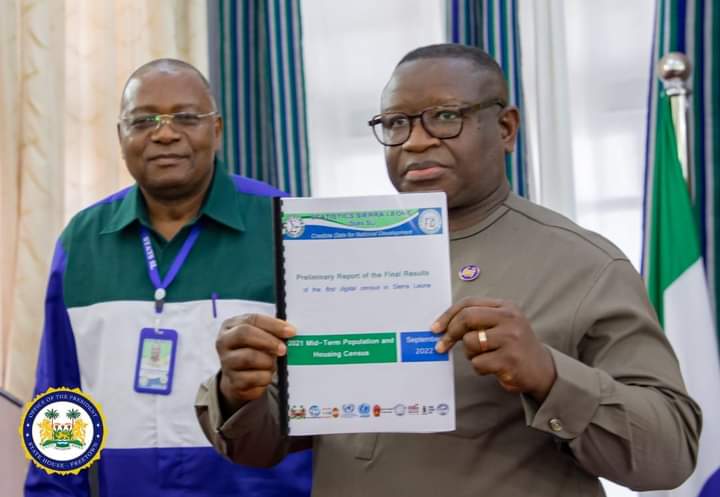
But some people, especially opposition political parties, were critical of the decision to conduct a Mid-Tern census, citing procedural errors, among other concerns.
The ensuing debate led boycott of the process, mainly in opposition dominated regions of the north and western areas of the country.
When the provisional result was released in May it therefore showed a major shift in population advantage, with the eastern region of the country identifying as the most populated, followed by the southern region, with the north-western region lying at the bottom as the least populous.
The new data maintains the same trend, revealing that three of the five regions increased in population size, while the remaining two experienced reductions in their populations. While the population size of the southern region increased by 27 per cent, that of the eastern region increased by 18.3per cent. The north-western region also increased by 2.1 per cent, while the population size of the western region reduced by 15.3 per cent, followed by the northern region with a reduction of 2.2 per cent in its population size.
On the whole, half of the population of Sierra Leone is found in the eastern and southern Region, while the other half is located in the northern, north-western and western regions, according to the latest census.
At district level, Kenema in the east has the largest share of the population (10.2 per cent), followed by Bo in the south (10 per cent). Western Area Rural, Kono and Western Area Urban districts also have substantial share of the population. Falaba district in the north is the least populous district (2.2 per cent), followed by Koinadugu district, also in the north (2.7 per cent).
Back in May, Stats SL’s management said despite the boycott call and resistance that occasionally resulted in physical violence against enumerators, the outcome was the true reflection of the population of the country as at census night on December 9th, 2021.
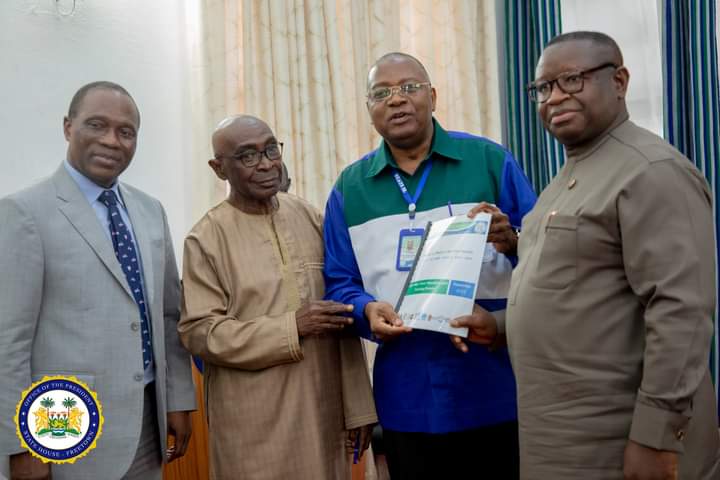
Prof. Sankoh, the Statistician General, reiterated this position on Thursday, noting that the process has resulted in the availability of data that could be used for wider purposes.
“Stats SL is proud to announce that we will henceforth be able to provide population data at the Locality, Ward, Section, Chiefdom/Council, District and Regional levels and due to the digital methods used, these data can be generated in a timely manner,” he says. He adds that from the data, the country also henceforth has a reliable sampling frame to support all important socio-economic surveys for local and national development planning purposes.
Speaking at the event, President Bio hailed the level of transparency and professionalism employed in the process. He stressed that the data will be the basis of all governance and policy decisions until the next census.

